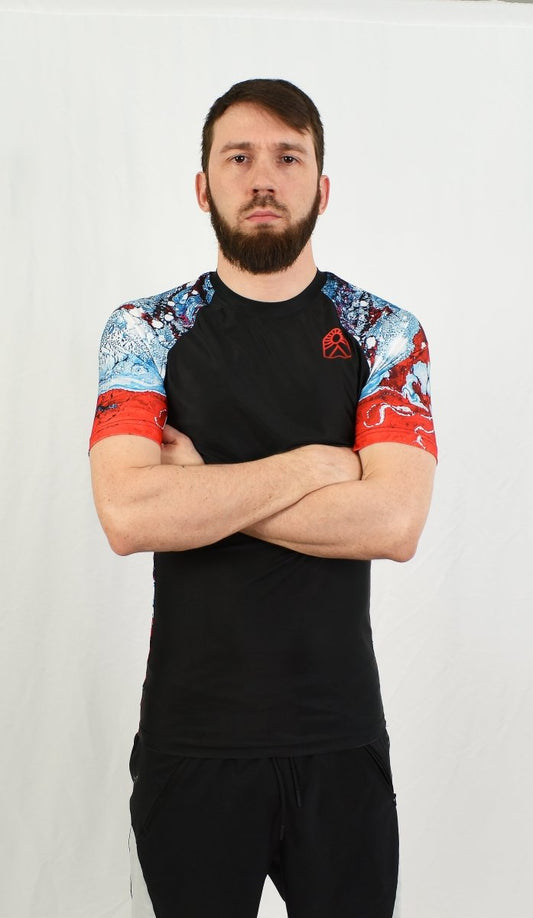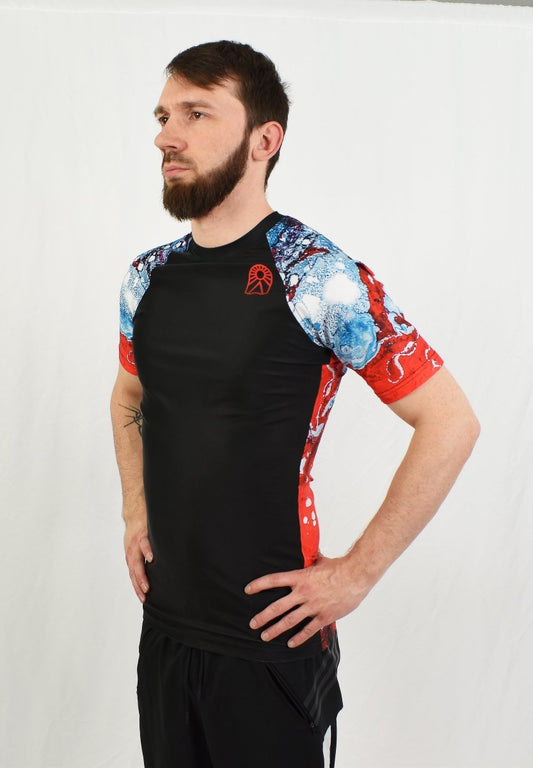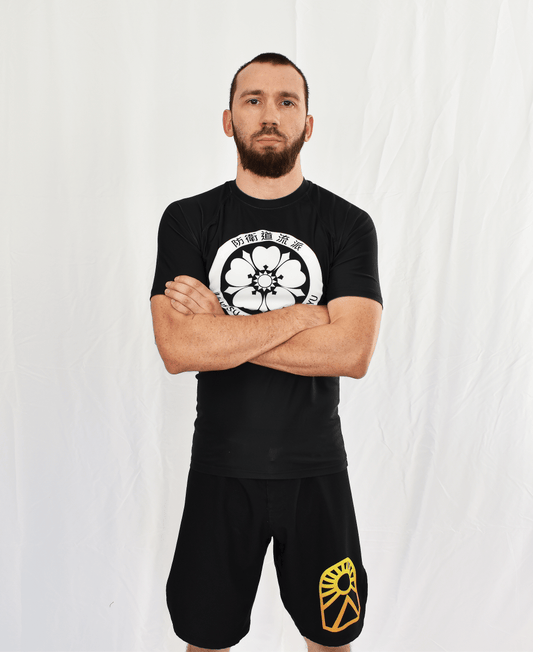
The ULTIMATE Guide to Brazilian Jiu-Jitsu Belts: From White to Black and Beyond
Pascal CadoretteHere's Everything You Need to Know About Belts in Brazilian Jiu-Jitsu
Welcome to the Ultimate Brazilian Jiu-Jitsu Belt Guide, covering the complete system from white belt to black belt and beyond in Brazilian Jiu-Jitsu.
Jiu Jitsu, a martial art originating from Japan which has gained immense popularity worldwide, is not only about physical prowess, but also about personal development and discipline.
As practitioners rise through the ranks, their belts serve as a visual representation of their skill level and dedication.
In this comprehensive guide, we'll examine the meaning of each belt color, the conditions for promotion, and the mindset needed to progress in this ancient art.
Whether you are a beginner curious about the first steps in your Brazilian Jiu-Jitsu journey or a seasoned practitioner aspiring to wear the coveted black belt, this guide is your road map to understanding the belt system and its importance in the world of Brazilian Jiu-Jitsu.
So, grab your gi and get ready to explore the depths of this exciting martial art!
The Importance of Belts in Brazilian Jiu-Jitsu
Belts play a crucial role in Brazilian Jiu-Jitsu, not only as a visual indicator of a practitioner's skill level, but also as a symbol of personal progression.
Each belt represents a level of mastery, and advancing from one belt to the next is an accomplishment that takes years of practice and commitment. Brazilian Jiu-Jitsu belts are not just fashion accessories, they are a reflection of a practitioner's dedication and perseverance.
Progression through the Brazilian Jiu-Jitsu belts is not only based on technical skills, but also on personal qualities such as discipline, humility and resilience.
Each belt represents a new challenge, a higher level of difficulty and continuous learning. By understanding the importance of belts in Brazilian Jiu-Jitsu, practitioners are motivated to work hard, improve and achieve new goals.
The belt system in Brazilian Jiu-Jitsu is also a way to pay homage to the tradition and history of this martial art. The belts are a legacy of Judo, a Japanese martial art from which Brazilian Jiu-Jitsu is derived.
Each belt has a symbolic meaning and represents a level of accomplishment in the practice of Brazilian Jiu-Jitsu. By wearing a belt, practitioners honor the teachings of masters past and present.
The hierarchy of belts in Brazilian Jiu-Jitsu
The Brazilian Jiu-Jitsu belt system is hierarchical, with each belt color representing a specific level of skill and experience. Here are the different belts in order of progression:
The White Belt - The Beginning of the Journey
The white belt is the starting point for all Brazilian Jiu-Jitsu practitioners. It represents innocence, humility and the desire to learn. Beginners wear the white belt until they achieve their first promotion.
During this time, they learn the fundamentals of Brazilian Jiu-Jitsu, including stances, submission techniques, and defensive moves. The white belt is the foundation upon which later skills are built.
Blue Belt - Mastering the Basics
Once a practitioner has gained a solid understanding of the fundamentals of Brazilian Jiu-Jitsu, they are ready to move on to the blue belt. The blue belt represents mastery of fundamental techniques and the ability to apply these skills fluidly in combat.
Blue belt practitioners are able to defend effectively and launch strategic attacks. It is at this stage that practitioners begin to develop their own style of Brazilian Jiu-Jitsu.
The Purple Belt - Developing a Unique Style
Purple belt is an advanced level of skill in Brazilian Jiu-Jitsu. Purple belt practitioners have a thorough understanding of the techniques and are able to adapt them to their own fighting style.
They are creative, fluid and able to react quickly to their opponents' moves. The purple belt marks the transition to expertise and the possibility of becoming an instructor.
The Brown Belt - Close to Mastery
Brown belt is an advanced level of mastery in Brazilian Jiu-Jitsu. Brown belt practitioners have a thorough knowledge of techniques and are able to execute them with precision and efficiency.
They have developed their own fighting style and are able to adapt to any situation. The brown belt is a precursor to the black belt, and those who wear it are considered close to mastery.
The Black Belt - The Ultimate Achievement
Black belt is the highest level of skill in Brazilian Jiu-Jitsu. It represents years of practice, dedication and perseverance.
The black belt is often considered the beginning of true learning in Brazilian Jiu-Jitsu, as practitioners continue to progress and improve even after obtaining this belt.
The black belt is also a symbol of respect and recognition from peers.
Beyond the Black Belt... the Journey Continues
Brazilian Jiu-Jitsu is not limited to the black belt.
After reaching this level of skill, practitioners can continue to progress by earning higher grade black belts. 1st grade, 2nd grade, 3rd grade, and so on, represent a continuous progression in Brazilian Jiu-Jitsu.
These belts are awarded by experienced masters and instructors, and each degree represents a new step on the path to mastery.
Tips for Growing in the Belt System in Brazilian Jiu-Jitsu
Progressing through the Brazilian Jiu-Jitsu belts takes time, commitment, and hard work. Here are some tips to help you advance through the ranks:
- Practice regularly: The key to progressing in Brazilian Jiu-Jitsu is regular practice. By training several times a week, you build your skills and confidence.
- Be patient: Progression through the Brazilian Jiu-Jitsu belts takes time. Don’t get discouraged if you’re not progressing as quickly as you’d like. Stay focused on your own journey and keep improving.
- Learn from failures: Failures are an integral part of learning. Don’t be discouraged by your mistakes, but rather learn from these experiences and use them to improve yourself.
- Work on your fitness: Brazilian Jiu-Jitsu is a physically demanding sport. By focusing on your fitness, you will be able to perform better in training and competitions.
- Find a good instructor: A good instructor can make all the difference in your progress. Look for an experienced and knowledgeable instructor who can guide you and help you achieve your goals.









